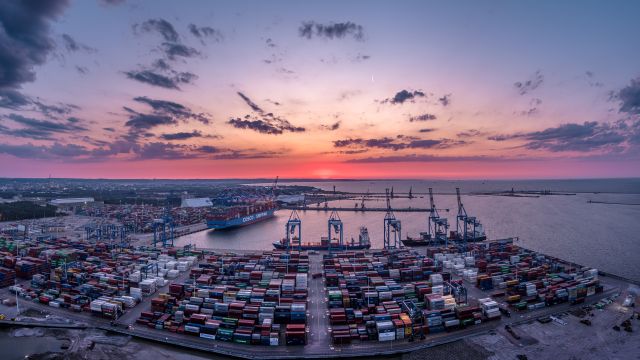DCT Gdansk terminal will be even better connected to the hinterland. The tunnel under the port channel of the Martwa Wisla river will be built together with a new communication junction nearby the terminal. The tunnel will facilitate transportation between DCT Gdansk and the city centre of Gdansk. Below we enclose a translation into English of the article describing the construction plans of the tunnel (Polska Dziennik Baltycki daily newspaper, August 17, 2009)
Translation of the article into English: Gdansk will drill the tunnel The decision on the construction of a tunnel under the Martwa Wisla River has been made. We already know that the construction will start in two years’ time. The tunnel, recall, is part of the Slowackiego route. It is important that Gdansk officials stress that it will be the longest tunnel in Poland constructed by the drilling method. Discussions lasted several months, as to whether the tunnel is to be made using a submerged approach (which makes it necessary to “dry” and close a portion of the river) or a drilling approach (which does not affect the river, but it can paralyze the functioning of quays). Feasibility studies have shown that the best approach is the drilling method – says Romuald Nietupski, president of Gdansk Municipal Investments Euro 2012. The tunnel will be bored with a “large screw” because of the shape of the TBM machine, which is being imported in parts and after assembly will reach about 30 metres in length and a weight of 105 tonnes! The “large screw” will bore two tunnels (two traffic lanes in each direction plus an emergency lane) with a diameter of 12.5 metres. The length of the drilled tunnel will reach 950 metres, with 100 metres on both ends of the tunnel built using the traditional method – says Romuald Nietupski. The tunnel will be built to the levels of the “Dworzec Drzewny” quay (looking from the Letnica side) and the “Dworzec Wislany” quay (from the Westerplatte side). However, GIKE bosses emphasise that the berths, currently used by various companies, will not be dug up nor will the access to the Orlen fuel depot be hampered. Boreholes will be placed at a distance of about 400 m from the river banks. - We are awaiting discussions with the Port of Gdansk Authority in relation to storage space on the ground to place the extracted soil as a result of the tunnelling – says Romuald Nietupski. Within a few weeks the company, Geoprojekt, will complete the documentation on the tunnel construction. In September a hydro-geologic analysis should be put out to tender, and when the tender is finalised – the creation of the executive documentation will be necessary. The actual construction is expected to last from late 2011 until the end of 2014. The tunnel will be built about eight metres under the river bottom. The tunnel boring machine (TBM) is expected to drill from eight to a dozen metres of tunnel a day. After being put into service the tunnel is to be monitored around the clock, and the speed limited to 70 km/h. The tunnel will be one of the main elements of the Slowackiego route. This route starts at the Rębiechowo airport and continues through Wrzeszcz, Letnica (near the stadium) and via the tunnel to the “Ku Ujsciu” junction, where it will connect to the Sucharskiego route. It will be possible to reach, via the suspension bridge, the domestic route “7″ and the “Olszynka” junction which connects to the planned southern ring road of the city of Gdansk. This tunnel construction will connect the two routes Slowackiego and Sucharskiego allowing one to bypass the stationary heavy traffic in the city centre. The entire investment, according to initial estimates, is expected to cost about 2 billion zlotys. The original version of the article was written by Paweł Rydzyński – Polska Dziennik Baltycki; August 17, 2009

